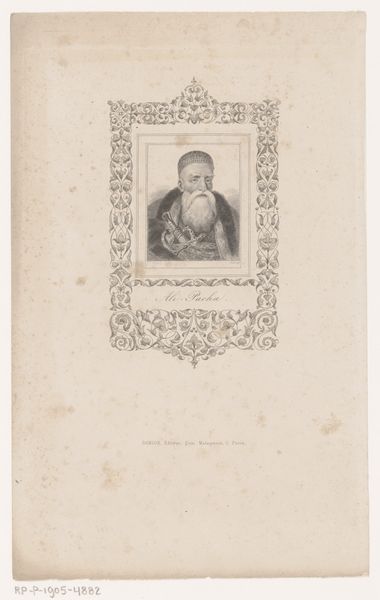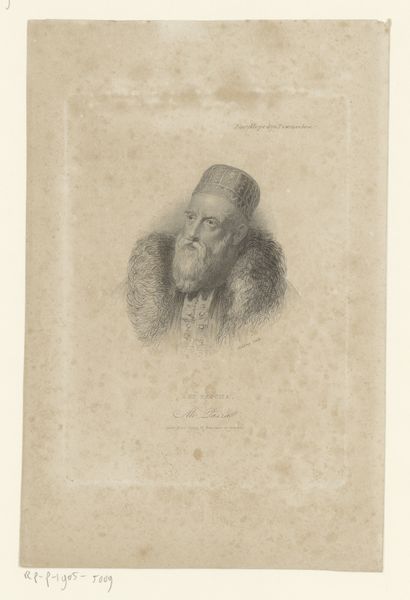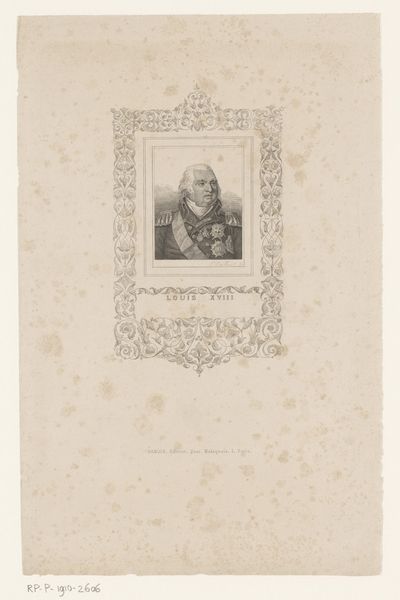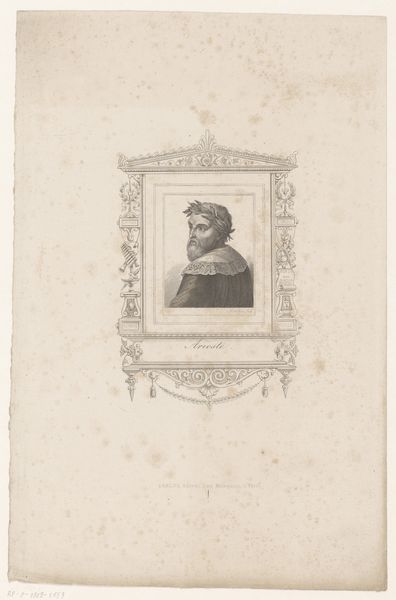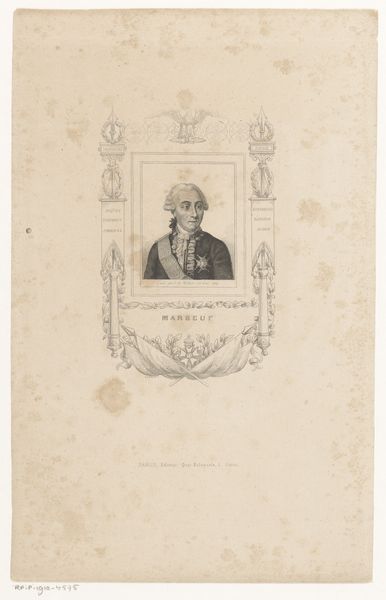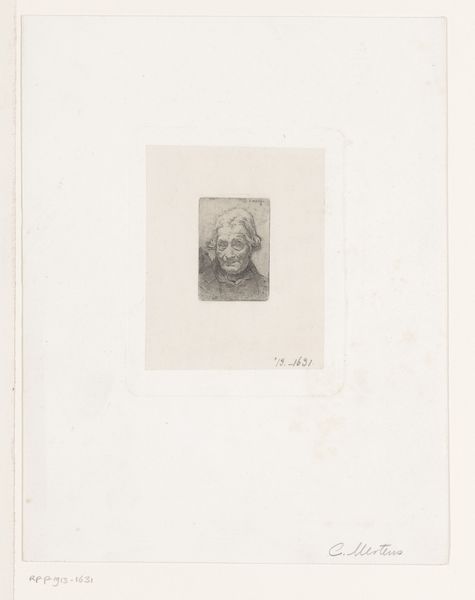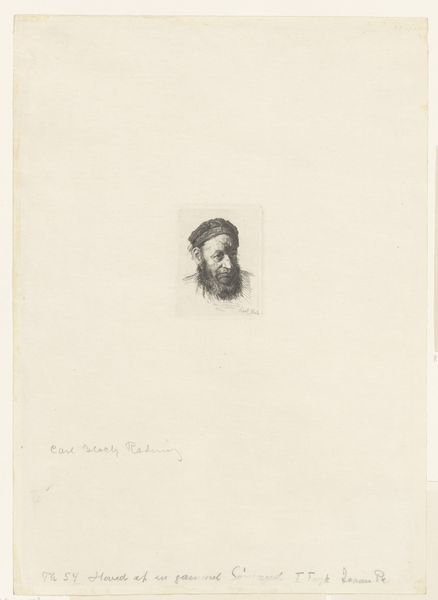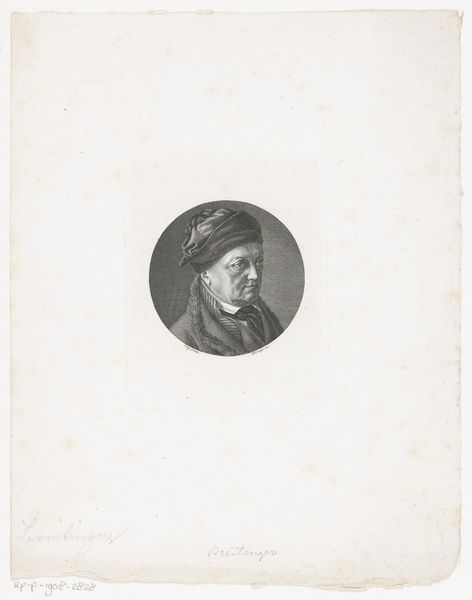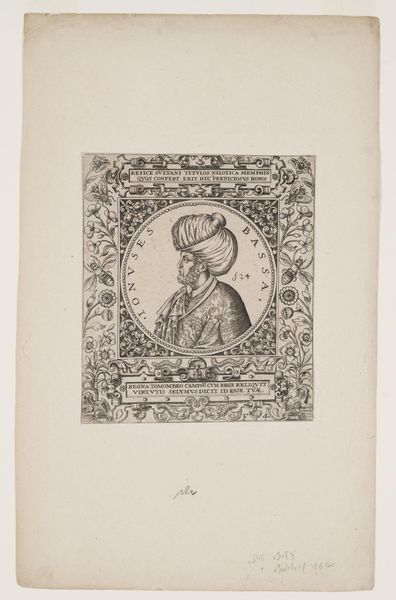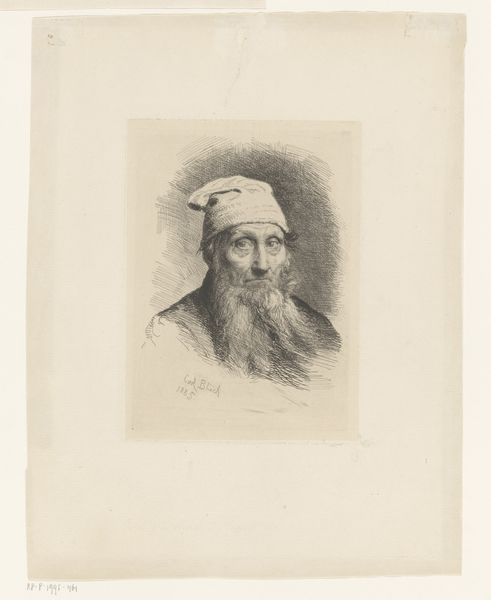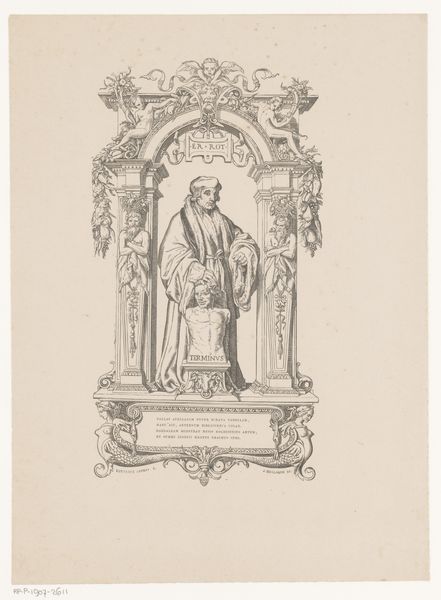
drawing, print, pencil, engraving
#
portrait
#
drawing
#
neoclacissism
# print
#
pencil sketch
#
old engraving style
#
pencil
#
history-painting
#
engraving
#
realism
Dimensions: height 252 mm, width 163 mm
Copyright: Rijks Museum: Open Domain
Editor: So, this is Jean Alexandre Allais's "Portret van Abdallah Ebn-Souhoud" from 1830. It's a drawing, an engraving printed on paper, I think. The subject has such a piercing gaze, so direct. What’s your take on this portrait? Curator: It's critical to contextualize Allais's portrait within the broader framework of 19th-century European orientalism. How does it perpetuate or challenge stereotypes about the 'Orient'? What purpose did these types of images serve at the height of French colonial expansion? Editor: I see what you mean. There’s a power dynamic at play, definitely. Did Allais actually meet Abdallah, or is this a construction based on existing notions? Curator: Exactly! Think about representation. Whose gaze is centered here? The sitter, Abdallah, is framed almost like a specimen for study. Note the very Neoclassical frame itself. Is it objective documentation, or is it inflected with cultural assumptions about the subject's identity? Editor: It makes you question the whole idea of realism in art. Is it ever really objective? Curator: Precisely. Even within a seemingly straightforward portrait like this, choices in technique, composition, and framing contribute to constructing a particular narrative. I also find the choice to render it as an engraving important, as printing was tied to proliferation and dissemination, embedding specific viewpoints to the masses. Editor: It is kind of unsettling to think about the possible implications this image may have had at the time. It’s much more complex than just a simple portrait. Curator: Indeed. It prompts us to reflect on the relationship between art, power, and representation, and to critically examine the ways in which cultures are portrayed across time. This pushes me to keep in mind the social conditions of any artist I observe. Editor: This really highlights how important it is to understand the history surrounding artwork to interpret its meaning fully. Thanks, that’s helpful!
Comments
No comments
Be the first to comment and join the conversation on the ultimate creative platform.
